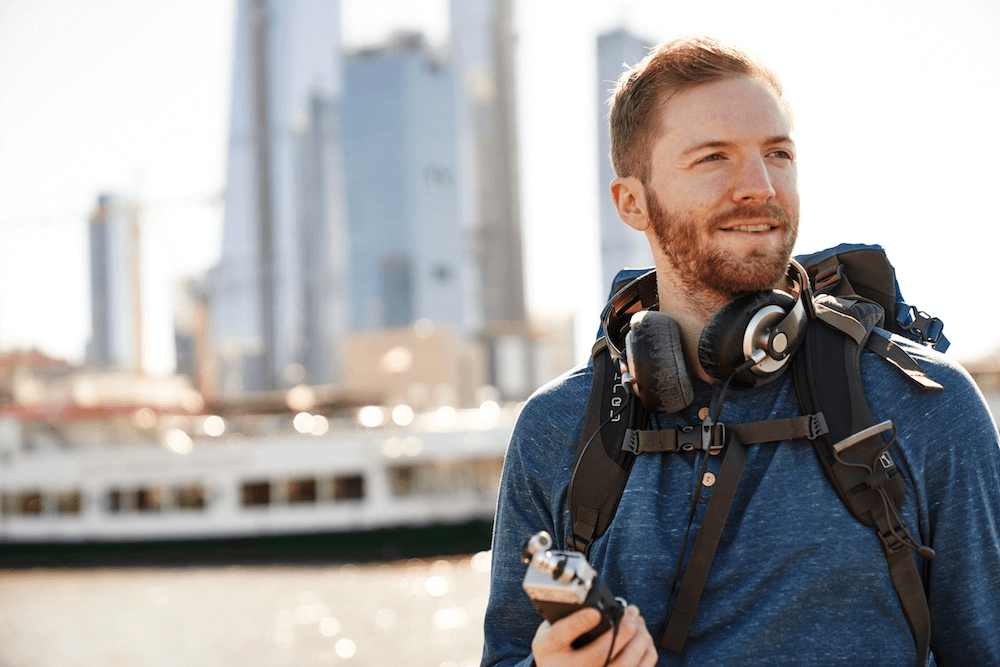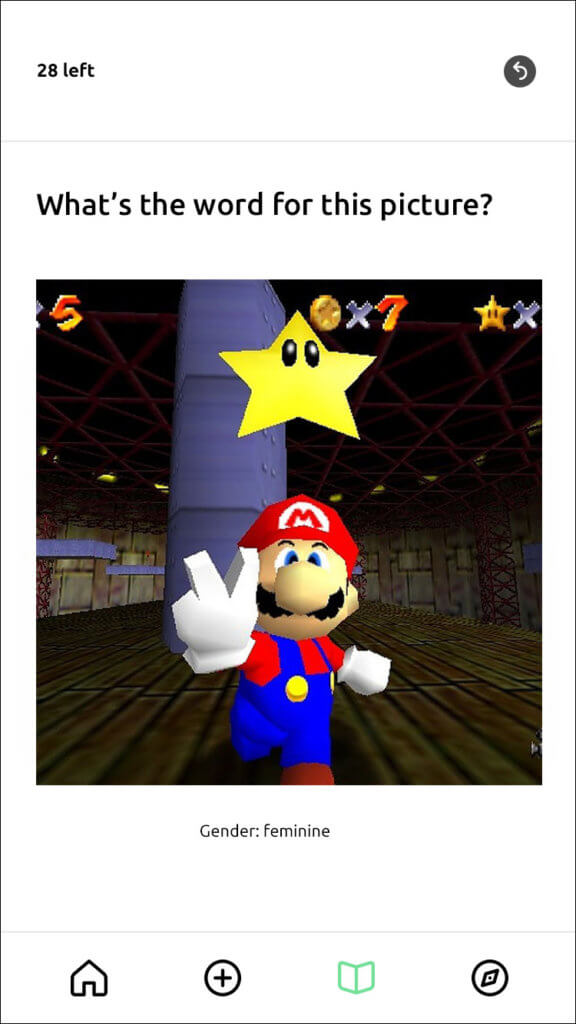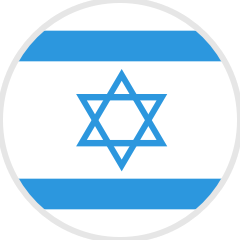Hi everyone! My name is Joe Glasgow, I’m a globetrotting video producer based in New York City.
Before I get into my actual experience with the app, I’d like to tell you about my introduction to the Fluent Forever name as well as my reason(s) for wanting to learn Spanish in the first place. In my mind, knowing your motivation behind learning a language is incredibly important. Not only for getting started, but especially for those days when you’re tired and have so much on your plate and you think “what’s the big deal if I just take ONE day off…” This specific motivation/reason is a great reminder that will reignite that fire and drive to practice every day and become fluent!

My motivation for learning Spanish started in Thailand of all places. As an avid traveler, I had slowly become ashamed of being that classic American tourist who only speaks English. This trip pushed me over the edge. Just out of coincidence, I met a lot of wonderful people on this trip who all happened to be from Spain. Fernando was the contagiously-friendly face behind the bar at the hostel I stayed at. Nikki and Mellie were the charismatic sisters who I joined on an island trip. The list went on. All of them spoke English well, but I noticed subtle differences in their mannerisms and personalities when they spoke Spanish. It occurred to me that because I only spoke English, I was only getting to converse with a translated version of them. I wanted to get to know these friends in their native tongue.
“If you talk to a man in a language he understands, that goes to his head. If you talk to him in his language, that goes to his heart.” — Nelson Mandela
This happened to be the quote on the first page of the Fluent Forever book. I had seen a TedTalk given by Gabriel Wyner (author and creator of Fluent Forever) a few weeks earlier and bought the book immediately. Gabriel’s talk and book introduced me to the ideas of SRS (Spaced Repetition Systems) and how experiences and emotions can help us remember words. After my multiple failed attempts at learning French and German, I was ready to try out a new way of learning.

On day 1 of the challenge, I started with the pronunciation trainers. These are used to help understand the different sounds of the language, as well as the mouth/tongue positions in order to create them. I was amazed by how quickly I was able to create these new sounds. It occurred to me that back in school, while trying to learn German and French, we did not start with the pronunciation of the language. In fact, I don’t remember a time when I was taught what positions my tongue and mouth should be in while producing words.
This was a great introduction to Spanish, after completing the pronunciation trainers I was able to look at any Spanish word and truly sound it out. Of course, there were still sounds that I was having trouble with. Though I was able to get down the “rr” sound after about a week (using the “Prince of Prussia” technique), I found it very difficult to create just the “r” sound without rolling the “r”s. This is where the listening exercises really helped me out. Two words that are very phonetically similar, with a subtle difference, would play (ex. “tono” and “dono”). Eventually, my ears would be trained to find those subtle differences which would benefit both the listening and the pronunciation as well.

The part I was most excited about was creating my own flashcards. I had a Skype call with Gabriel a few weeks before the challenge started. He educated me on how we are able to use emotions, past experiences, nostalgia, etc. to remember words. This tied in with the flashcards because on the app, you are able to choose your own images. For example, “estrella” (star) was one of the first words assigned. I searched for and chose an image of the star you win in Super Mario 64 because it brought back the feelings of being a child, achievement, and spending time with my brother playing video games. I was blown away by how quickly that word stuck in my memory.
I noticed that the less energy and time I put into finding an image for a flashcard, the worse I was at remembering that word. My hope for later versions of Fluent Forever is that you will be able to upload your own pictures for these flashcards, instead of just searching on Bing. This way, I will be able to have a picture of my own dog for “perro” instead of just a similar breed of dog.
One month into the three-month challenge, I compared myself to a baby learning the language. I could point at a lot of objects and say the word for them. My flashcards began to represent full sentences, instead of just words. “Mi abuelo era marino, y viajó alrededor del mundo en barco” (My grandpa was a sailor, and traveled all around the world in a boat.) I was able to understand sentence structure and grammar rules with these sentences, which I then began to make more personal for myself. My grandpa was a professional golfer. So I would then start to say, “mi abuelo era jugador de golf…”
Though I was getting a good grasp on sentence structure, I still did not feel confident about formulating sentences in conversation. This is where the tutoring, as suggested by Gabriel using his method, came into play. 2-3 times per week, I would spend an hour conversing over Skype with a native Spanish speaker. This sped up the learning process rapidly because I was not able to use English at all during my time practicing with them. I would have to ask about the definitions of these new words using just the words I had learned from the app.
The greatest piece of advice I got about learning languages was to be fearless and shameless. Instead of feeling insecure or scared that I might say something wrong, I began going into conversations like I was already fluent, regardless of the outcome. This caused me to learn from my mistakes, gain actual confidence, and lead to some funny interactions. When I eventually visited my friend Fernando in Spain, I went to a gym and said that I wanted “love” (amor) instead of a locker (armario)…
Though I was learning Latin American Spanish, I actually found it very helpful to hear Fernando and his friends speaking Castilian Spanish. Similar to the ear training exercises, I was able to notice the subtle differences in the accents and identify specific words that way.
Towards the end of the challenge, I knew that I was going to continue using the app. Friends and family were amazed by my accent as well as my ability to say what was on my mind in this new language.
My 4 tips for people who are getting started:
- Keep reminding yourself what your motivation is behind learning the language.
- Find a place to use the app where you can speak loudly and make mistakes.
- Practice the words you are learning on the app with your tutor in sentences that apply to your life.
- Be confident and throw yourself into conversations in the new language (even if it makes people at the gym think you’re looking for love).
And if you’re looking for additional resources to supplement your Spanish language learning, look no further than this free, comprehensive list.
On a final note, I cannot wait to continue using the app and become completely fluent!
[shareaholic app="share_buttons" id="28313910"]
















